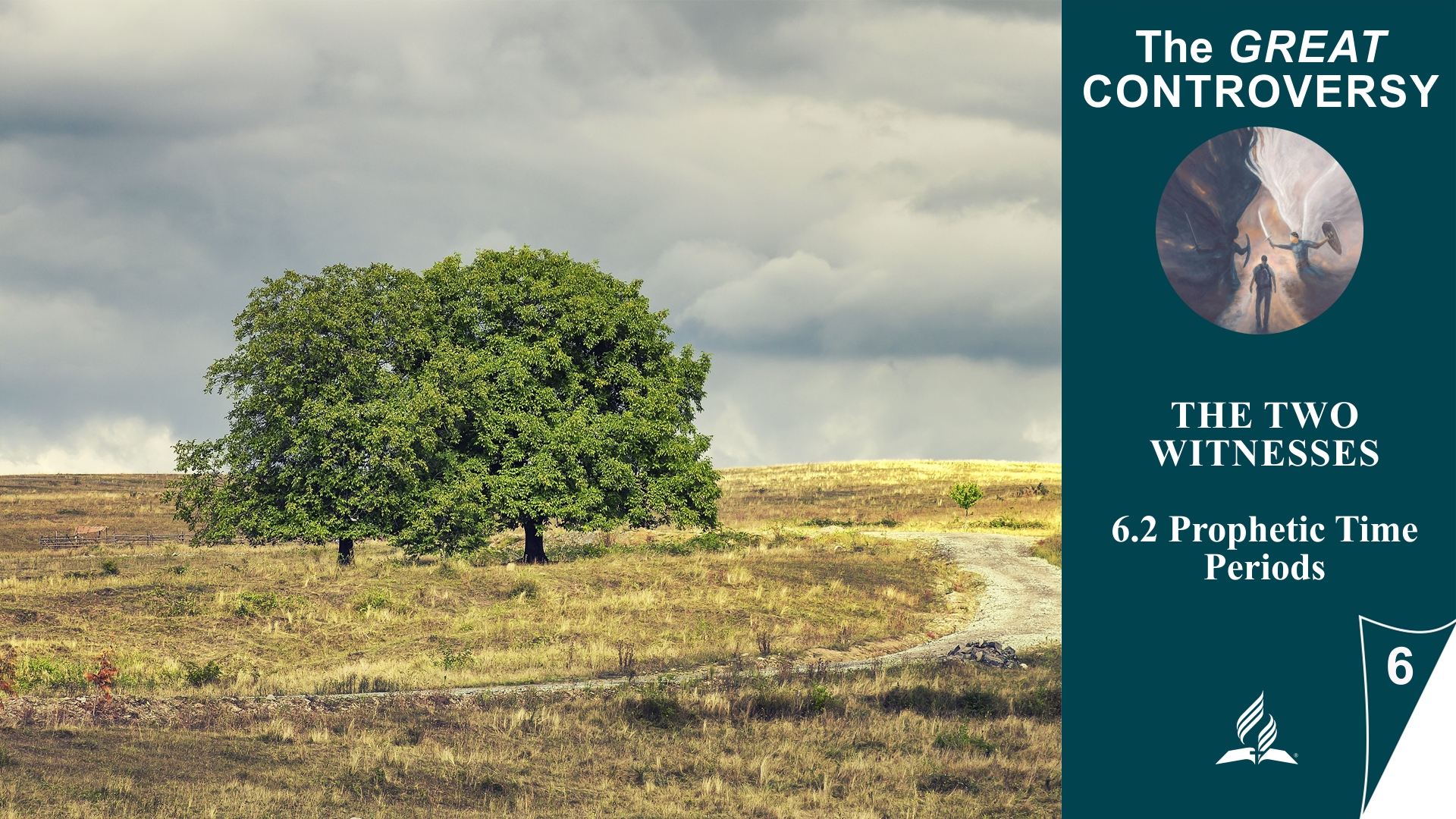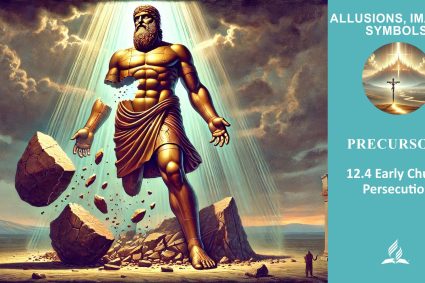


6.2 Prophetic Time Periods
The Continuity of Divine Faithfulness Amidst Darkness
Compare Revelation 11:3; 12:5–6, 14–15 with Daniel 7:25. What similarities do you see in these prophetic time periods?
In the prophetic time periods described in Revelation 11:3; 12:5-6, 14-15 and Daniel 7:25, there are several similarities:
-
Three and a half years or 1260 days: All the mentioned sections refer to a period of three and a half years, symbolically equated to 1260 days. This time frame is used to represent the duration of persecution or the struggle against the saints and divine truth. In Revelation 11:3, it is mentioned that the two witnesses will prophesy for 1260 days, while Revelation 12:6 speaks of the woman fleeing into the wilderness for 1260 days. Also, Revelation 12:14 speaks of the woman fleeing into the wilderness for a “time, times, and half a time,” which also corresponds to three and a half years. Daniel 7:25 uses the same measure of time to describe the duration of persecution by the “little horn.”
-
Persecution of the saints and the people of God: Both Revelation and Daniel describe how the saints and the people of God are persecuted and oppressed during this time period. Persecution is depicted through various symbols, such as the trampling of the holy city, the persecution of the woman, or the actions of the “little horn.”
-
Testimony and preservation of the word of God: Despite persecution and resistance against the saints, it is emphasized that the word of God and divine truth are preserved and proclaimed during this time. The two witnesses in Revelation 11 are not silenced despite their persecution and continue to prophesy. Similarly, Revelation 12:6 and 12:14 emphasize that the woman in the wilderness is preserved. Daniel 7:25 points out that the saints are not ultimately defeated despite the persecution by the “little horn.”
These similarities highlight the consistency of the prophetic portrayals in different parts of the Bible and underscore the importance of preserving faith and the truth of God during times of persecution and resistance.
What teachings, based on tradition and not on the word of God, are held by many Christians today?
There are various teachings and practices held by many Christians that are based on traditions and may not necessarily be based on direct biblical statements. Here are some examples:
-
Liturgical traditions: Many Christian churches practice certain liturgical traditions and rituals that have developed over the centuries, such as the structure and order of worship services, liturgical vestments, candle lighting, processions, etc.
-
Dogmatic doctrines: Some theological content and dogmas taught by certain churches or denominations may be based on church traditions and councils and not necessarily on direct biblical statements. An example of this is the doctrine of papal infallibility in Catholic faith.
-
Veneration of saints and cult of Mary: In some Christian traditions, there is a pronounced veneration of saints and recourse to Mary as an intercessor. These practices may be based on church traditions and legends that have developed over time.
-
Sacramental theology: Sacramental theology, including teachings on baptism, communion, and other sacraments, often relies on theological interpretations and church traditions that have developed throughout history.
-
Eschatological beliefs: Some eschatological beliefs and end-time teachings may be based on certain theological interpretations and church traditions that may not necessarily align with all biblical texts.
It is important to emphasize that not all Christian traditions and teachings automatically contradict the word of God. Many traditions serve to deepen faith and strengthen community. However, it is also important to ensure that our teachings and practices are always based on the word of God and do not take the primary place that belongs solely to it.

The connection between the prophetic time periods and our everyday lives in faith lies in the need to preserve truth and faith in God despite challenges and persecutions. Here are some connections:
-
Steadfastness in faith: The prophetic time periods illustrate that the saints and the people of God must remain steadfast in faith despite persecution and resistance. This teaching reminds us that in our daily lives as Christians, we must also remain steadfast even when faced with difficulties, temptations, and opposition.
-
Preservation of the word of God: Despite persecution and resistance to the truth, it is emphasized that the word of God and divine truth are preserved and proclaimed during this time. In our everyday lives as Christians, it is important to preserve and proclaim the word of God, even if it goes against the prevailing culture or human traditions.
-
Awareness of persecution and resistance: The prophetic time periods remind us that persecution and resistance against faith can be a reality. This should sensitize us to the persecution of our fellow believers worldwide and encourage us to advocate for religious freedom and justice.
-
Critical reflection on teachings and traditions: The mention of teachings and traditions not based on the word of God reminds us to critically reflect on our own beliefs and traditions. We should ensure that our teachings and practices are always based on the word of God and do not take the primary place that belongs solely to it.
Overall, the prophetic time periods can encourage us to preserve a strong and steadfast faith, proclaim the word of God, and critically reflect on our teachings and traditions to ensure they align with divine truth.

Darkness may reign over the world, but God’s faithfulness remains unshaken, while His Word remains the light amidst the darkness.
(Visited 46 times, 1 visits today)




















